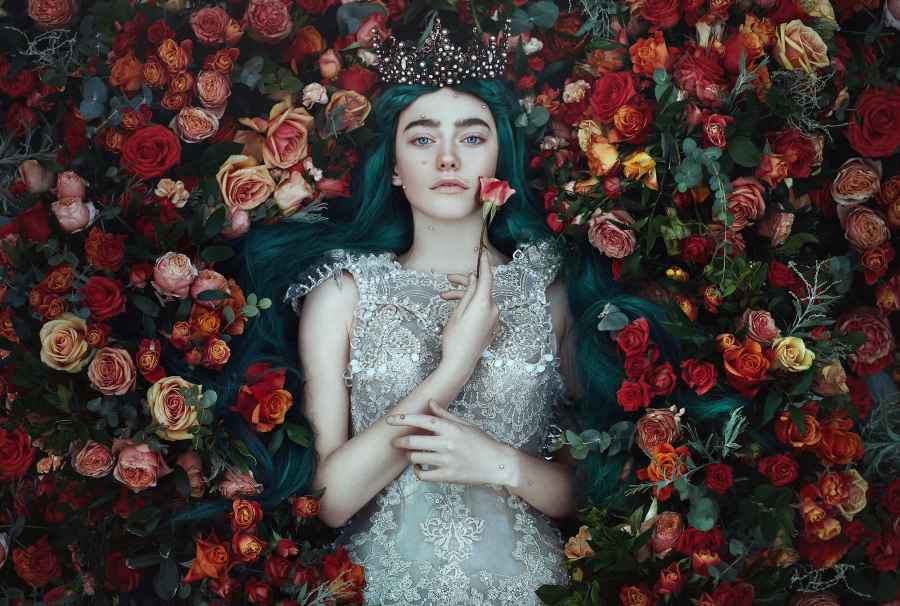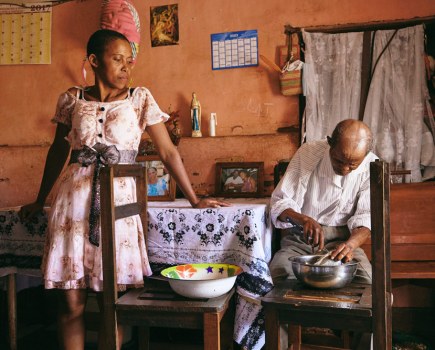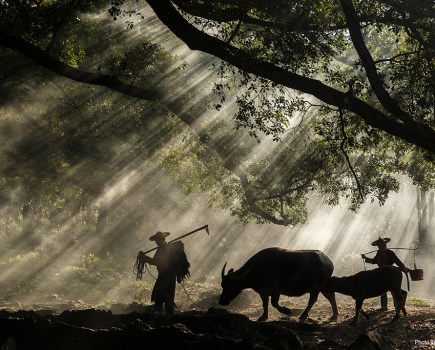How did you get started in photography?
I started through Photoshop actually. While studying a degree in Architecture a program that we needed to know how to use was Photoshop. At the time I had no idea where to even start with it and while looking online I noticed a lot of people on Flickr used photoshop. I had a summer ahead of me and figured it would be well spent by taking photos and photoshopping them into new creations. And that’s pretty much how it started! Very quickly I discovered a new love in the art of capturing an image and then using photoshop to bring out the very best in it.
My big break came when I started working with Phase One. They’re a company based in Denmark and create beautiful digital medium format cameras. I started working closely with them a couple of years ago and it was at that point when I felt my work was opening doors and creating opportunities.

What is about about magical/fine art portrait work which particularly attracts you?
I think it’s the insight into the artist. Art is expression and as a finished piece it has a story of course, but it’s also the story behind the art, about the artist that draws me in and fascinates me.

Where do you get the ideas for these wonderful compositions and concepts?
I’m not sure actually haha! It’s a culmination of a lot of things. A lot of my work is 30% preparation and 70% going with the wind! It’s a whirlwind of a photoshoot where I look around me and create something with the earth and nature around me. It’s fun and sometimes it works and sometimes it doesn’t. Fortunately now most of the time it works. At the same time, in the subconscious of my mind I have inspirations in my thoughts, emotions, history, paintings, illustration, anime, manga, culture, renaissance, royalty, music, lyrics, tales in far away lands, and so on.

How do you get the best from models?
I give a lot of direction. I didn’t used to, but as I’ve slowly started falling into my style I know that I’m always looking for something and I can see more clearly than the model can. So I direct and try hard to capture a sense of flow and balance.

You also are a Photoshop expert. Roughly how much time do you need to spend editing compared to actually shooting?
I’m often asked how I ‘colour tone’ my images and this in turn inspired me to share some of my process and sell Photoshop ‘actions’. The actions were launched just over a year ago and have become a huge hit in the community. We’ve actually started inviting other leading creatives to create collections of their own and it’s been really interesting to see how different artists manipulate colour. It’s wonderful. If you’re interested in checking it out here’s the website – www.fineartactions.com. Our Instagram and Facebook family are also very active and we feature photographers every day.
I would say I spend double, if not more, the time in the post processing. A lot of work goes into the shooting part, it’s where the image is captured, created, and crafted, but it’s in the editing where the image is honed, toned, and comes to life.

What gear do you use, and how do you find it helpful?
I use a couple of Vanguard tripods, which are a great help when shooting. I use the VEO 204AB tripod as my main go to for when I’m creating complex composition shots. It’s an absolute necessity when I’m creating an image that I know I’ll be expanding and adding more detail into. It allows me to direct and hone an image and then come back to the camera and click. I also have the VEO CM-264 monopod, and this I use when I’m filming BTS footage. It’s great for taking smooth detail B-roll shots.

Any exciting future projects you want to tell us about?
For the past few years I’ve been creating a lot of my work with leftover discarded flowers from florists and other people’s weddings. Needless to say I am very excited for the opportunity to create something spectacular with the flowers from my forthcoming wedding! I’ve been planning it for most of this year. Keep an eye on my Instagram (@bellakotak) for new releases. My main website is at bellakotak.com.







